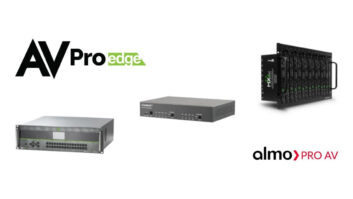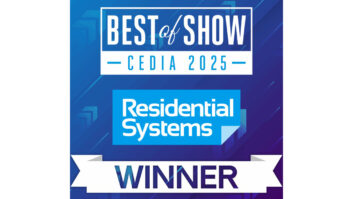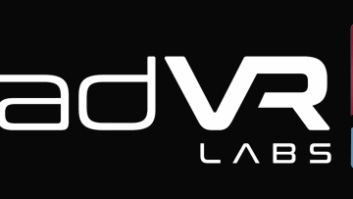TV sets with interactive data capabilities, TV-centric home networks, and digital video recording technologies stood at the technology forefront during Berlin’s International Funkausstellung electronics show, which started its nine-day run on August 28 and annually attracts 400,000 to 500,000 visitors.
At the biannual event, Philips and Pioneer demonstrated competing rewritable DVD-Video recording technologies, with Philips planning worldwide deliveries of its product during the second half of 2000 and Pioneer planning December shipments in Japan. Philips’s product, demonstrated as an engineering sample, is a variant of the DVD+RW standard and will use rewritable discs said to play back on existing DVD-Video players.
Pioneer used a working sample to demonstrate its favored technology, whose specs are being finalized within the DVD Forum, but the technology doesn’t provide for the backward-compatibility of rewritable discs with existing DVD players unless the players are upgraded.
In the AV-network realm, Philips demonstrated a TV-centric home AV network that, in finished form, will be based on the HAVi standard adopted by eight major CE companies. It expects demonstrations of HAVi-equipped products to occur by the end of the year and for HAVi-enabled AV products to be available from multiple vendors in the second half of 2000.
Among TV-based data-services technologies on display, Thomson demonstrated its solution, developed in conjunction with Microsoft. Thomson’s technology will give analog TV broadcasters the ability to deliver interactive data service to compatible TV sets. The company expects some U.S. broadcasters to commercialize the technology in the second quarter to coincide with spring availability of Thomson’s first compatible direct-view and rear-projection sets.
In audio, Thomson announced plans for a portable headphone CD/MP3 player, and Philips announced that Super Audio CD players will make the transition to multichannel playback as early as mid-2000, when Philips said its Marantz unit will begin worldwide deliveries of a multichannel model. Philips, which co-invented the SACD format with Sony, demonstrated a prototype multichannel SACD player and discs at the show.
In a related development, Philips embraced DVD-Audio by announcing third-quarter 2000 plans to launch a combination SACD/DVD-Audio/Video player in the U.S. and elsewhere. It, too, would play multichannel SACD discs.
For its part, Sony reaffirmed plans to deliver a multichannel SACD player sometime in 2000, although a U.S. executive earlier this year said it probably wouldn’t arrive until late in the second half.
Also at the show:
- Sony demonstrated a digital camcorder that records on specialized MiniDiscs, but the company doesn’t plan to commercialize the camcorder. Instead, its intent was to demonstrate the enhanced storage capacity (650MB) of its new higher density discs. As a camcorder medium, it would deliver only 15 to 20 minutes of better-than-Hi8-quality movies.
- And Philips CE division CEO Adri Baan said the company’s first DirecTV set-top box would be “available at retail locations in the U.S. early next year.” Pricing was unavailable. The unit will also be sold to DirecTV, which will subsidize the product to convert its PrimeStar customers to the smaller dish technology, a spokesperson said.
Details about these and other developments follow:
Digital Video Recording
Thomson, Philips, and Pioneer actively demonstrated DVD-Video recorders, and although Thomson said it hasn’t yet committed itself to a particular format, Philips and Pioneer apparently have. Philips is basing its product on a Philips-developed variation of the DVD+RW standard. “We’ll license our technology at a low cost or none at all to push the format,” said senior DVD project manager Eric Tijssen. “We’re seeking alliances.” All other rewritable DVD formats are incompatible with existing DVD players, Tijssen claimed.
Philips’s version of DVD+RW provides for a two-sided disc with 4.7GB of capacity per side. Each side delivers two hours of DVD-quality video or four hours of reduced-bit-rate video between VHS and S-VHS quality, Tijssen said. The discs will also play on PCs equipped with DVD-ROM drives and MPEG2 decoders.
“We’ve perfected the 4.7GB [per side] rewritable disc [for compatibility with existing DVD players],” Chris Buma, Philips program manager for A/V disc recording, told TWICE. “Now it’s just a matter of doing it, that is, designing the product so we can produce it at high volumes to drive the price down. It must be the same price as the first generation of high-end DVD players,” which sold for as much as $1,000. At that price, the recorder will feature an analog TV tuner, a digital iLINK input for connection to digital camcorders, and a set of Macrovision-protected analog inputs including composite, S-video, and component.
If there’s demand, Tijssen said in response to questions, Philips’s first recorder will feature two-side playback and a memory buffer to provide seamless recording and playback of TV programs lasting more than two hours.
Philips will support the launch with two-sided rewritable discs whose prices haven’t been determined.
Although Philips hasn’t yet crammed its technology into a single component-size chassis, Thomson did in its demonstration of a rival rewritable DVD video format based on DVD-RAM. It uses a cartridge-clad single-sided, single-layer 5.2GB disc with an integral cartridge. Three recording modes deliver one two, or four hours of recording time per disc. A Thomson spokeswoman said the company hopes to refine the format so it’s compatible with existing DVD players, but Stephane Pechmajou, DVD product manager for Europe, added that the company is “looking at various other formats” as part of its plan to ship DVD recorders late in 2000.
Pioneer managing director Takashi Kobayashi said his company expects to ship a DVD-RW model in Japan at the end of this year, based on its assumption that the DVD Forum and content providers will resolve outstanding copy-protection issues. Pioneer’s Japan recorders, he said, would have built-in satellite and terrestrial tuners and only analog input jacks. Pioneer, he said, would like to add digital inputs for U.S. models but isn’t yet sure on the configuration issue.
Pioneer research and development GM Tadahiro Yamaguchi said the recorders would be able to record both write-once DVD-R discs and rewritable discs. The write-once would be readable on existing DVD players that can read both layers of a prerecorded dual-layer disc. The vast majority do, he said. Existing DVD players would be able to play back rewritable discs only if the machines were upgraded. That might require a service call, he said, but the company’s goal is to achieve a final spec that would let users upgrade the player’s software by inserting and playing a disc.
Philips and Thomson also demonstrated single-chassis D-VHS recorders with built-in MPEG2 encoder/decoders for the European market, but they haven’t yet decided to bring the technology to the U.S. The single-chassis recorders have a built-in analog TV tuner, analog inputs for recording other video sources such as satellite TV, and an iLINK digital input for copying digital-camcorder tapes.
Philips will ship its model in Germany in October or November at about $2,100, but “putting an MPEG II encoder in a VCR may be too expensive for the U.S.” said D-VHS marketing manager Mark Poldervaart. The “preferred road” in the U.S. would be a model that adds a copyright-protected digital input for time-shifting HDTV broadcasts, he said. Such a model would lack a built-in HDTV tuner/encoder because of the cost. “Preferably, it would have an HD tuner and encoder in it, but because of its cost, reception will be in the TV, and the [HD] bitstream would be recorded on the tape,” Poldervaart explained. The recorded bitstream would be sent back to the user’s HDTV set for decoding and playback.
Thomson’s D-VHS recorder, similar to the Philips model, is due in Europe by the end of 2000. To its model, Panasonic adds a DTV tuner based on Europe’s Digital Video Broadcasting (DVB) standard, which doesn’t incorporate HD quality.
Interactive TV
Panasonic, Philips, and Thomson demonstrated TV-centric interactive data services, with Thomson unveiling details of a Microsoft joint venture to add data interactivity to analog TVs.
In the U.S., Thomson will deliver its first TVs with interactive-data technology in the spring, and the technology “will go deep in our line, like electronic program guides,” a spokesman promised.
Broadcasters will use the vertical blanking interval (VBI) to send data at night to the TVs for storage in memory. The sets will incorporate a 200MHz processor, 16MB flash memory, and 16MB RAM. The VBI will deliver a host of interactive services positioned between electronic program guides and full web access, but for consumers who also want full web access, the module also contains a 56k modem. European users will use the modem to connect to their ISP of choice, but U.S. consumers will connect to Web TV service, for which a subscription fee will be charged. The other interactive content, developed and provided by individual broadcasters, would be subscription-free. The broadcasters would generate revenue through several sources, including advertising and direct-response marketing, Thomson said.
For digital TVs, companies such as Panasonic, Philips and Sony demonstrated Java-based Multimedia Home Platform (MHP) technology, which standardizes the API for adding interactive-data and web-browsing services to DTV broadcasts based on Europe’s MPEG-2 DVB [Digital Video Broadcasting] standard. The MHP standard, to be completed by year’s end by a consortium of companies, could have applications in the U.S., where DVB-based services are delivered by some digital cable companies and by EchoStar, said Paul Bristow, Philips’s representative to the consortium. In addition, the group is talking to the ATSC to implement the standard for terrestrial digital broadcasts in the U.S., he said.
For its part, Nokia Multimedia Terminals hosted a live demo of a portable, battery-operated web-browsing digital TV called the Media Screen. It downloaded web pages and moving pictures transmitted by a local TV station for the occasion and used GSM cellular technology for a wireless return path. It would be priced at “the low end of laptops” and could be available using Europe’s DVB DTV standard in two years, said CTO Helmut Stein.
Solid-State Music Storage
Philips and Thomson revealed new details about their U.S. and worldwide plans for SDMI-compliant headphone portables that store music in solid-state memory. In addition, MiniDisc inventor Sony acknowledged its intent to participate in the market for solid-state music storage, and Thomson became the first company worldwide to announce plans for a combination CD/MP3 headphone portable.
Philips showed a mockup of its first flash-memory portable, due in the first quarter in the U.S. with a targeted everyday retail price of about $200. It will initially play back music stored in the MP3, Real Audio G2, Liquid Audio, a2b, and EMMS compression formats, said Guy Demuynck, managing director of Philips’s audio business group. But the square-shaped silver-color device is capable of playing additional formats when other decoding formats are uploaded into it, he said. Philips hasn’t announced the type of removable memory card it will use, a spokesman said.
For its part, Thomson reaffirmed plans for U.S. September shipments of its Lyra portable, available at $199 and $249 for 32MB and 64MB versions that both play the MP3 and G2 formats. They can be upgraded to play about four more formats when additional decoding software is loaded into Lyra’s internal DSP, a spokesman said. Additional compression formats from Thomson are planned “in coming months,” said Pierre Mureau, Thomson Multimedia’s VP/Europe.
Thomson also said a headphone portable CD/MP3 player, shown as a mockup, will ship in the U.S. late in 2000 if it’s happy with consumer demand for the Lyra and competing products. The device’s internal MP3 decoder would play back music from MP3 CDs and from a removable Type 1 or 2 CompactFlash card, the memory-card format also used by Lyra. The CD/MP3 player will probably ship with Real Audio G2 decoding, the spokesman said. Pricing hasn’t been set. Most likely, he added, the portable will be designed to accept software downloads so it could decode additional compression formats as well.
Without committing itself to ship dates, Thomson also showed dealers mockups of MP3-equipped shelf systems, car CD players, a CD boombox, and a three-CD component carousel changer. The latter product would incorporate an MP3 decoder, Compact Flash slot, and ability to play MP3 CDs made on a 100-disc changer/CD-recorder, which was also shown in mockup form. The changer would incorporate MP3 encoder/decoder to create MP3 files from the stored CDs. The MP3 files could potentially be transferred to a Compact Flash card as well, the spokesman said. A hundred MP3 CDs would play up to 1,500 hours of music, he added.
Another future Thomson product is a high-capacity Compact Flash card, due by Christmas of this year in the U.S. with about 120MB of memory, the spokesman said. It would store about 120 minutes of MP3 music at a 128kbps data rate, which many companies said delivers CD-quality sound, although most audio critics disagree.
Sony opened the door to MP3 and other formats when Jean-Michel Perbet, president of Sony Europe’s consumer group, said Sony is “is working in those directions [storing music in flash memory].” But he told TWICE that, “to my knowledge,” such a product isn’t in the works for shipment this year in any market.
Although Sony fine-tuned its MD marketing strategy in the U.S. to promote MD as a recordable, portable format, Perbet claimed MD and flash-memory-stored music formats would “answer a different need.” Sony’s “Memory Stick is a transfer medium to use information immediately,” whereas MD is a “storage and archive format,” he claimed.
DVD-Audio
Although Sony and Philips introduced Europe to the SACD format that they co-invented, Philips for the first time outlined detailed plans to enter the DVD-Audio market, and Sony said it might, too. Said Jean-Michel Perbet, president of Sony Europe’s consumer group, “We are studying DVD-Audio.” That format “may be a different kind of products…perhaps more mass market,” he said.
At Philips, audio business group managing director Guy Demuynck outlined this timetable for Philips-brand SACD and DVD-Audio products: At the end of the second quarter or in the third quarter of next year, Philips plans U.S. shipments of a “very high-end” DVD-Video/SACD player that incorporates two-channel SACD playback and would appeal to audiophile consumers. As early as the third quarter of 2000, Philips will ship an all-in-one SACD/DVD-Audio/Video player, which he said would appeal to “convenience-minded” consumers.
A Philips-branded SACD-only player will be launched “as soon as prices come down” to more affordable levels, said Adri Baan, CEO of Philips’s consumer electronics division. That could come as soon as late 2000 or early 2001, Demuynck told TWICE.
Philips has no plans for DVD-Audio/Video players that lack SACD, Demuynck said.
Philips-owned Marantz will deliver the first Marantz-branded SACD-only player, a two-channel model, in the fall in Japan and in the spring in the U.S. and Europe, but Marantz plans a mid-2000 worldwide launch of its first multichannel SACD player, Demuynck said.
Also at the show, Panasonic introduced its first two DVD-Audio/Video players to the German market, and although they’re due in December, a Universal Music executive declined to n announce release dates or titles of discs to support the launch. But he did cite “three works in progress,” that would likely be among the first Universal discs: They include Sting’s Brand New Day and LaBoheme.
In 2001, said Eiji Esaki, international operations general manager for Matsushita’s audio division, worldwide DVD-Audio sales will hit 5 million units.
For its part, JVC plans DVD-Audio/Video player shipments in Europe in December, and could follow as early as the first half of next with U.S. deliveries, according to Marc Adachi, general manager of the International Sales Division’s marketing department for the A/V and multimedia sector.
Pioneer managing director Takashi Kobayashi said company plans call for DVD-Audio player shipments in Japan at the end of the year, in Europe early next year and in the U.S. “probably” in the spring.
CD-Recorders
With demand up sharply and more manufacturers entering the market, “We are at the point of a mass market breakthrough,” said Philips audio business group managing director Guy Demuynck, of audio CD-R/RW recorders. He and Masaji Okubo, general manager of Pioneer’s overseas sales division for home entertainment, agreed that one million units have been shipped worldwide during the past few years. But they said sales will accelerate this year to an annual rate of 1.5 million, rising to 3 million in 2000.
Given the demand, supplies of new Philips models due in the U.S. in September “will be quite tight,” Demuynck said.
Hoping to satisfy demand that Philips can’t fulfill, Pioneer plans several new models for the U.S. One of the first will be a micro component system that includes a dual-drive CD system. One drive will house a CD recorder, the other a three-disc changer. The unit is due in December and is tentatively expected to retail for $799, with the actual price dependant on the yen-dollar exchange rate. A component three-disc changer/CD-recorder is due next March at a tentative $599, depending on the exchange rate.
For its part, Philips announced U.S. pricing of CD-recorders shown earlier in the year. Two new single-drive models will retail for $399, with the new dual-well model going for $549, and a minisystem with integrated CD-recorder at $599.













